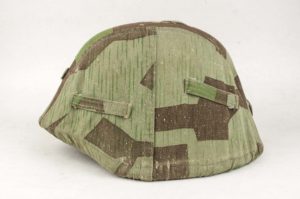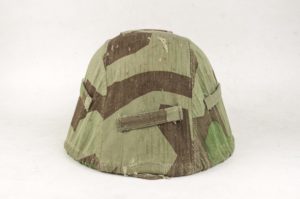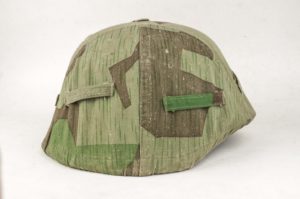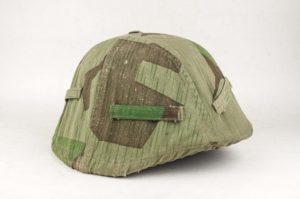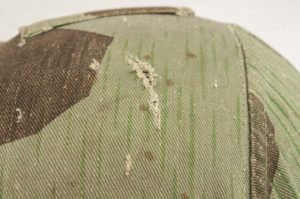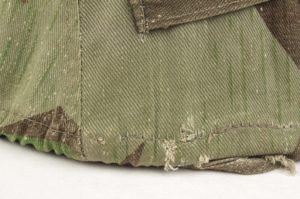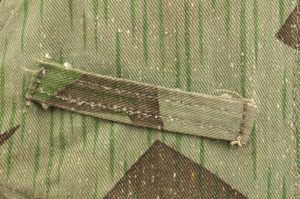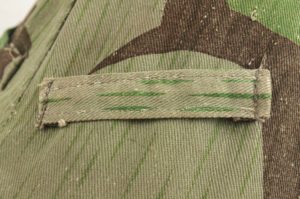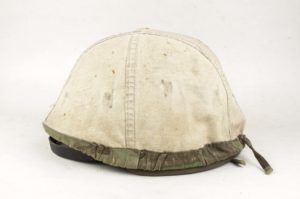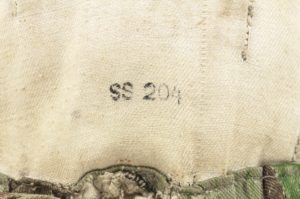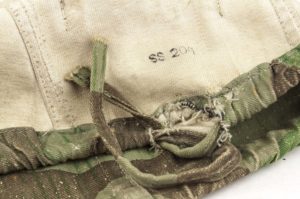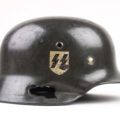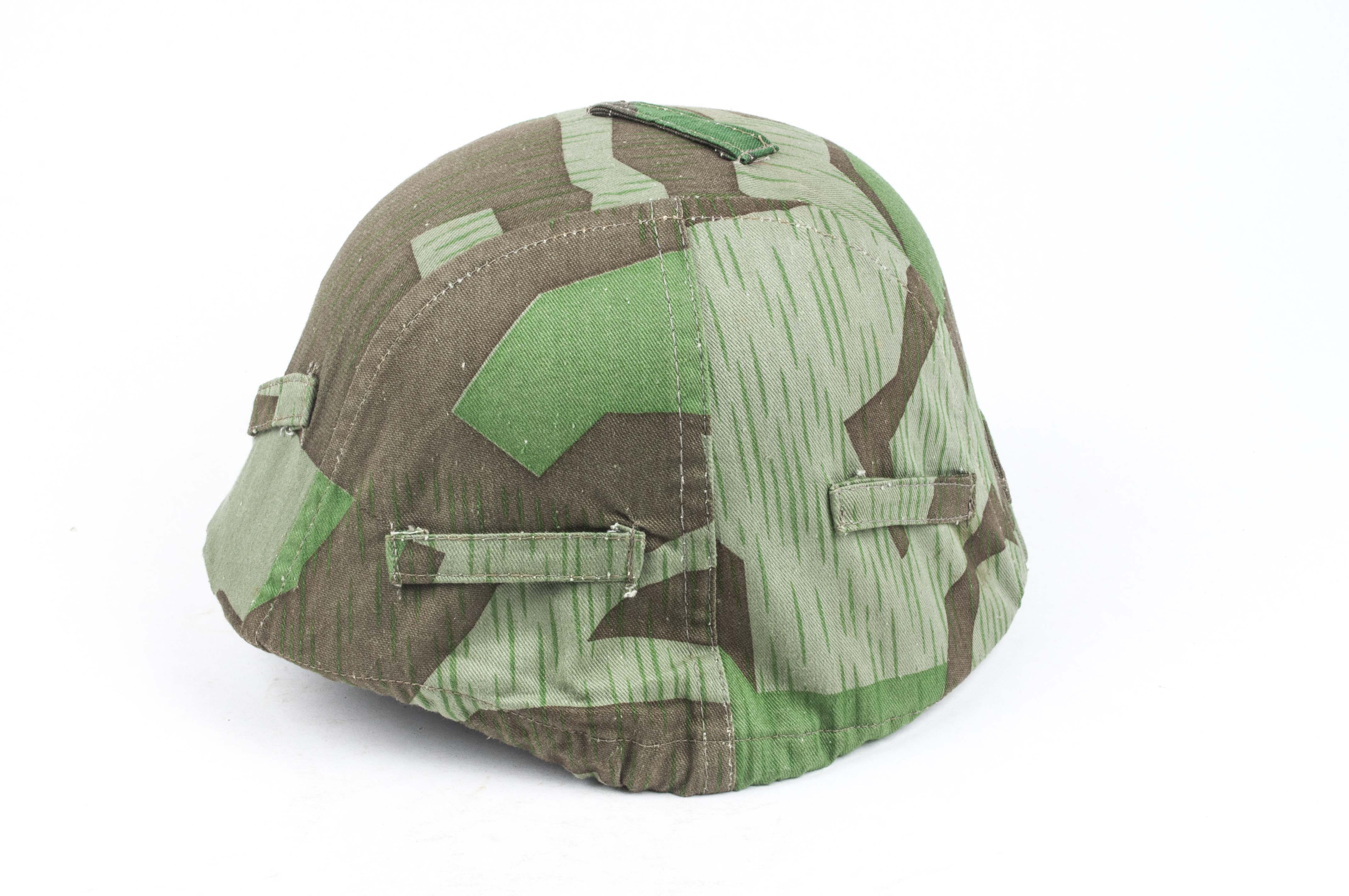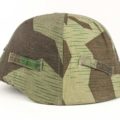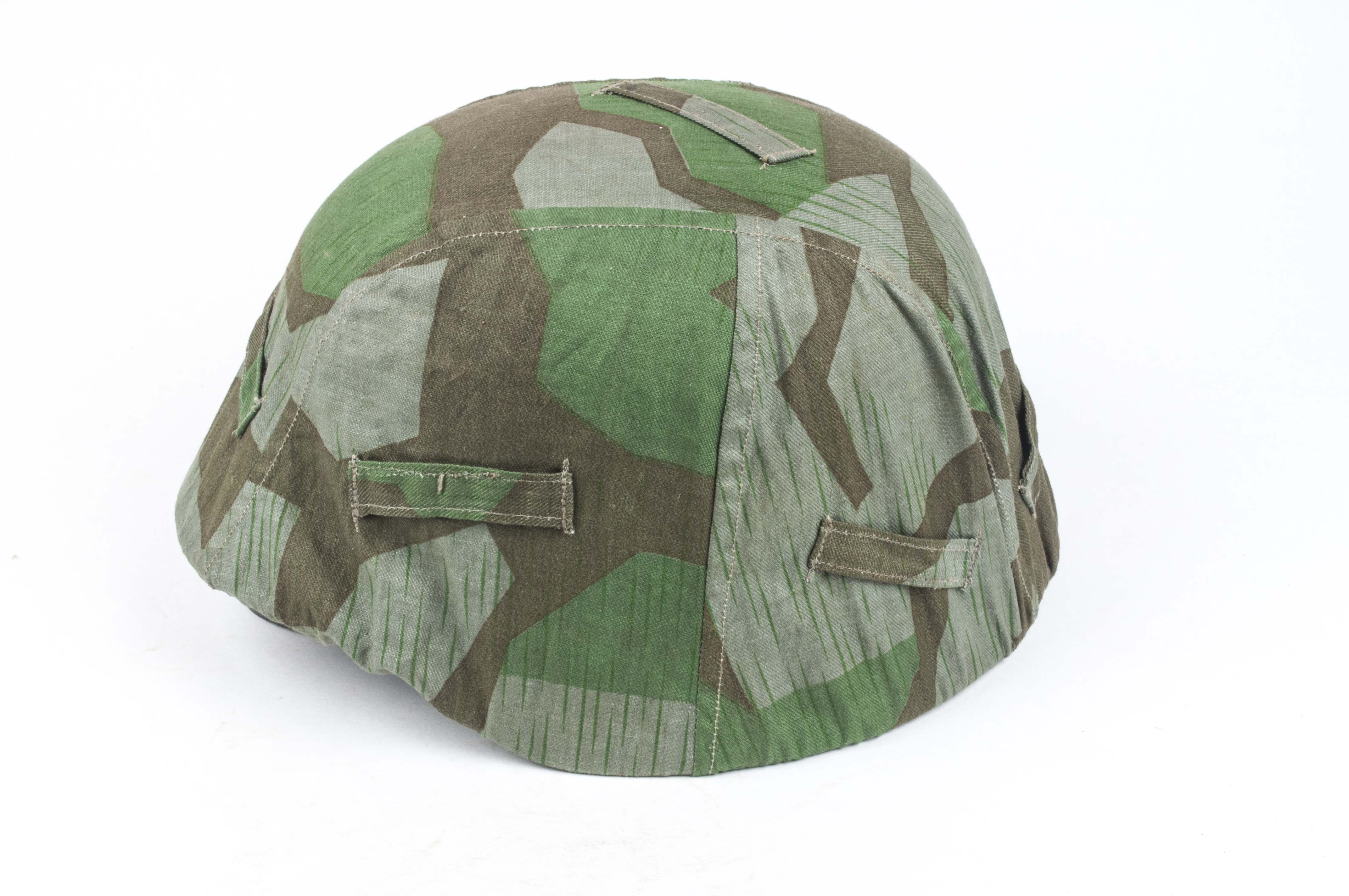Helmet cover – Heer – Splittertarnmuster – SS 204
Arguably the helmet was the most recognizable part of the individual German soldiers appearance. With a design that derived from the type used in world war one, the German helmet offered more protection then ones used by it’s enemies. The quality field gray painted steel helmet with two decals and rolled steel rim and leather liner was a labor intensive product and simplified as the war progressed. The earliest model helmet used in world war two was the model 35 or M35 Stahlhelm. During the war the helmet was simplified in 2 stages. In 1940 the airvents changed from separate rivets affixed to the helmet shell to stamped in the main body of the shell. In 1942 a new model was introduced where the rim of the shell was left sharp and not rolled over as previous models. These models are known in the collector community as M40 and M42. The low sides that protect the neck and ears, the tell tale design that the Germans introduced in 1935 can still be seen in modern day army helmets.
In 1942 a new type of helmet cover or Stahlhelmüberzüge was designed. This new cover made in Splittertarnmuster was first mostly issued together with the hood-less Splittertarnmuster camouflage smock. These covers where originally made in three different camouflage patterns: Mausgrau, Splittertarnmuster and later in the war Sumpftarmuster. These covers are fastened with a drawstring and have 7 sewn on foliage loops.
Model: Splittertarnmuster
Markings: SS 204
Maker: –
Size: Photographed on a shell sized 62
Drawstring: Camouflaged material, the same as the material of the cover itself.
Notes: This cover was combat used and left behind in Middelburg, The Netherlands.



